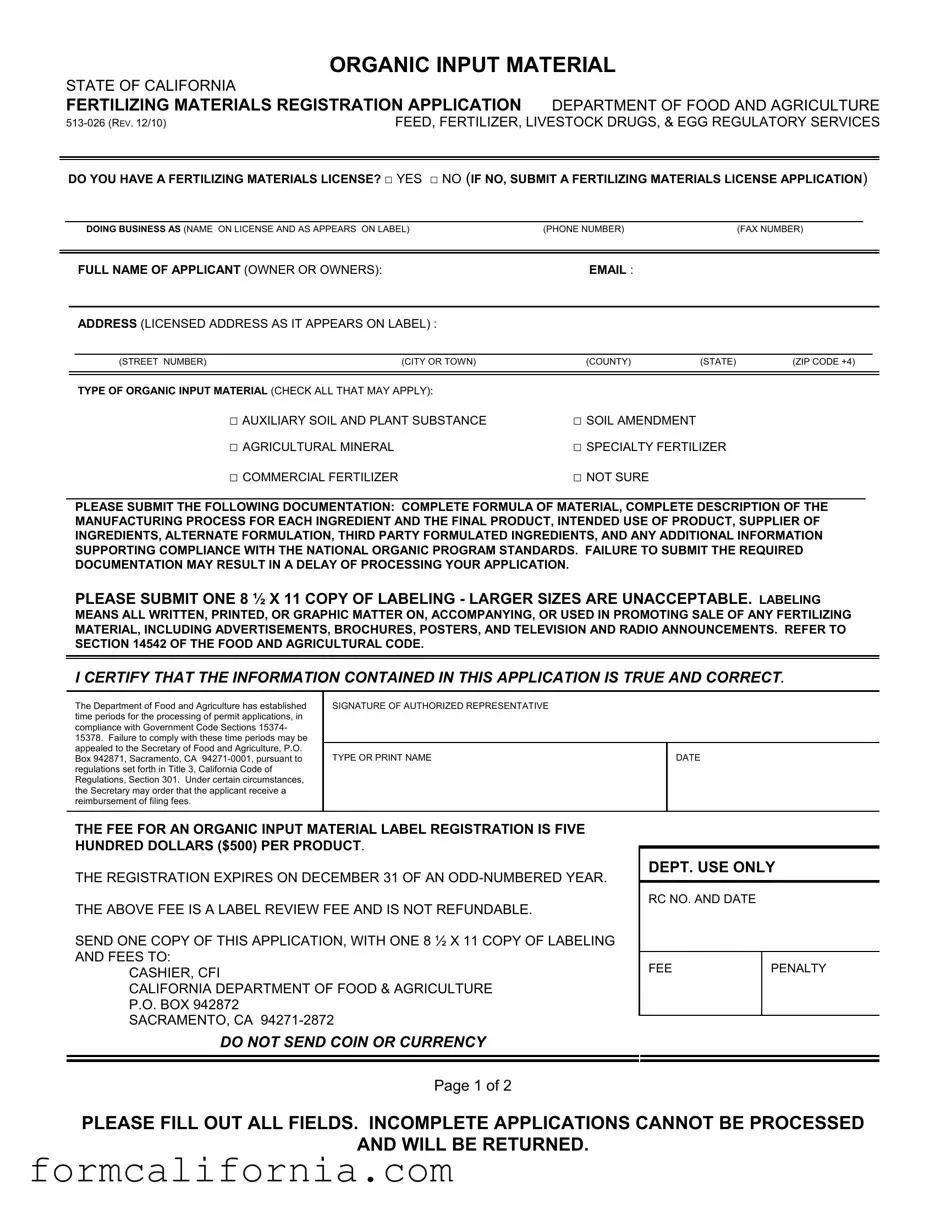The California Seed Law Application for Registration is one document that shares similarities with the California 513 026 form. Both are required for regulatory compliance in the agricultural sector, necessitating detailed information about the product, including its intended use, manufacturing process, and ingredients. These forms also demand accurate labeling information to ensure transparency and safety in the usage of agricultural products. Additionally, they contribute to maintaining standards within the industry, requiring applicants to certify the accuracy of the information provided.
Another comparable document is the Pesticide Registration Application. Like the 513 026 form, this application requires detailed descriptions of the product, including its formulation, intended use, and manufacturing process. Both applications play a crucial role in environmental and public health by regulating substances introduced into the marketplace, ensuring they meet specific safety standards. They also require the submission of labeling information and a fee, emphasizing the importance of clear and truthful product representation.
The Livestock Feed License Application shares features with the 513 026 form as well, particularly in registering products intended for animal use. Both necessitate comprehensive details about the product, including source and composition, to ensure compliance with health and safety regulations. They also share the need for labeling and advertising materials to be submitted for review, indicating a common interest in protecting consumers and ensuring products are marketed accurately and ethically.
The Organic Certification Application is similarly aligned with the objectives of the 513 026 form by emphasizing compliance with specific organic standards. Both applications require detailed descriptions of the product, including ingredients and production processes, to verify adherence to organic principles. The emphasis on comprehensive documentation supports transparency and integrity within the organic sector, ensuring products meet established organic standards before being marketed to consumers.
The Environmental Protection Agency (EPA) Facility Registration Form, while federal in scope, complements the state-level focus of the 513 026 form by requiring detailed information on facilities that produce or handle materials with potential environmental impacts. Both forms seek to regulate and monitor the safety and compliance of products and operations, ensuring they adhere to established health, safety, and environmental standards. The requirement for accurate and transparent information underpins both applications' roles in safeguarding public and environmental health.
The Commercial Feed License Application, which is necessary for companies producing animal feed, parallels the 513 026 form in its requirements for detailed product information, manufacturing details, and ingredient sourcing. Both documents serve as a means to ensure that products entering the market are safe for their intended use, whether for animals or agriculture, and meet specific regulatory standards. The focus on labeling and marketing materials further emphasizes the commitment to consumer and animal safety through accurate and honest communication.
Lastly, the Hazardous Materials Business Plan (HMBP) involves thorough disclosure of materials handled by a business that could pose risks to public safety or the environment, sharing a similar intent with the 513 026 form. While the focus of HMBP is broader, encompassing any hazardous material, the underlying goal of protecting public health, worker safety, and the environment by requiring detailed information on the handling, use, and storage of these materials aligns with the specific agricultural focus of the 513 026 form. Both documents reflect regulatory efforts to minimize risks associated with chemical and material usage.


